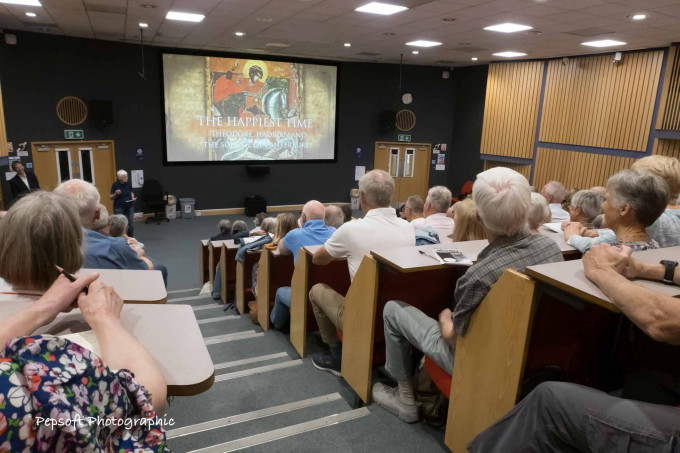Firstly, Happy New Year to regular and new readers of the CKHH blog, we hope you enjoy it and come back again in future weeks. Secondly, the new website organised by Dr Claire Bartram and constructed by Ben Cornwell will continue to grow, partly new material and partly material moved from the old site. Moreover, it has the Medieval Canterbury Weekend 2024 web pages. These can be reached via ckhh.org.uk/mcw or canterbury.ac.uk/medieval-canterbury and if the latter takes you to an old History Weekend, I’m afraid that’s due to algorithms based on your previous Google or other search engine use. You can ‘train’ your search engine to go to the ckhh.org.uk site, but it takes a bit of time!
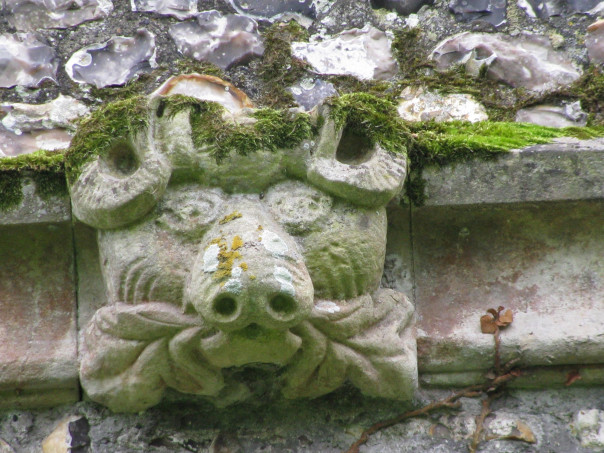
Even though the MCW24 will be the highlight this year, ok I am biased, but we are continuing to compile a programme of other CKHH events to take place through the rest of 2024, both those the Centre will be running and those to which the Centre will contribute. More on these in the next few weeks but March looks very busy because on Saturday 2 March there is the ‘Inspirational Women Writers’ one-day conference organised by Dr Claire Bartram as part of the funded Aphra Behn project with the follow-up creative workshop the following Saturday to be led by Dr Catriona Cooper. As it happens, the next Saturday I’ll be in Almondbury to give a lecture on ‘Going to Church in Late Medieval Yorkshire’ and then on Saturday 23 March I’ll be at Dover Museum for our ‘Migrants, Merchants and Mariners in the Kentish Cinque Ports, c.1400–c.1600’ workshop. This is coming out of the funded Kent’s Maritime Communities project involving CCCU and the University of Southampton involving Dr Craig Lambert, Dr Robert Blackmore and me, and also giving presentations that day will be Kieron Hoyle and Jason Mazzocchi, our CCCU doctoral students who are undertaking research projects allied to the main project. It promises to be a fascinating day, just like those from the Aphra Behn project so please do save these dates we’ll be delighted to see you and there will be more details concerning programmes and how to book shortly. Additionally, Dr Diane Heath’s new ‘Green Dragon’ in the Franciscan Gardens in Canterbury will ‘grow’ over the next couple of months, although poor Diane has been suffering with Covid over the Christmas break – I hope you get well again soon!! Diane is taking on a new role entitled Senior Research Impact and Engagement Fellow and she will use her experience and training to aid History and Archaeology to build up a proper impact agenda and indeed REF submission for 2028. In particular, this is aimed at using history and heritage to engage and enrich the lives of young people, just as Diane has been doing with her now successfully completed funded Medieval Animals Heritage project.
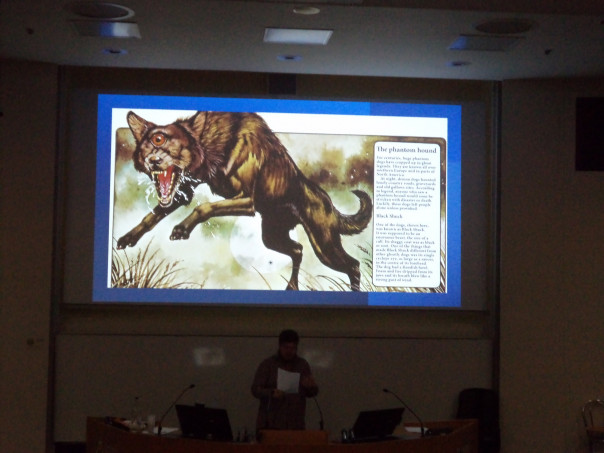
Over Christmas I took the opportunity to complete a short article for the Friends of Canterbury Cathedral’s Chronicle on the coming of the Franciscan friars to Canterbury in 1224. Not that they were the first friars to set foot in the city, the Dominicans had done that three years earlier, but they hadn’t stayed at that time and would return to Canterbury to establish their friary after the Franciscans. Interestingly, the Austin friars didn’t arrive for almost another century, while the Carmelites never settled in Canterbury at all, indeed their friaries in medieval Kent comprised a very widely spread triangle of Sandwich in the east, Aylesford in the north and Lossenham in the west.
Additionally, I managed to get the other article done which I wanted to send off to Diane for her essay collection out of her highly successful Medieval Animals Heritage ‘Skin and Bone, Wood and Stone’ conference held last summer. The medieval pig has now been resurrected as ‘Rethinking the medieval pig: from woodland forager to bagpipe playing sow’ and this will have an outing as a paper this term for the MEMS weekly seminar at the University of Kent on 25 January. I appreciate that I am biased here too but pigs are highly intelligent creatures and I enjoyed looking after them years ago when I first left school as my first ‘proper’ job, and I can still remember that the piglets much preferred chocolate-flavoured creep feed compared to either vanilla or strawberry flavours!
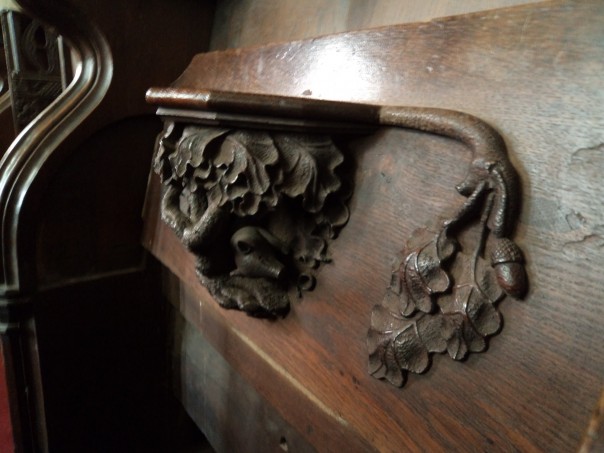
As well as preparing teaching materials for this term and marking assignments that have come in from last term, this week included the January online meeting of the Lossenham Project wills group. We had a very good turnout this morning (Thursday) and had an excellent discussion concerning multiple issues. The transcription of probate materials and their entry onto the project’s database seems to be going smoothly, which is our core activity, but several members also mentioned other primary sources and resources that will extend the value of the project, not least our growing late medieval/early modern vocabulary.
In terms of reporting on other aspects of the wider project, Dr Rebecca Warren summarised the most recent findings from the archaeological excavations at the Carmelite friary site and I mentioned that I had been in email correspondence with Michael Saunders who has taken on the Lossenham Project website. This remains a ‘watch this space’ scenario but I’m hoping I will be able to report some new activity at the next wills group meeting. Consequently, I’m not yet looking for more reports for the website from people about their own projects using the probate materials until those I already have are published.
In the meantime, and as a potential other avenue for members of the group to undertake, Rebecca outlined an idea about the potential for compiling genealogies using the database. This might be of one of the noble families in the area such as the Guldefords who had fingers in a lot of pies! Or those further down the social scale, the yeomen and artisan families who were perhaps major players in a specific parish. For we know such networks were important, being based on kinship, including through marriage, but also involving shared matters such as office holding – acting as feoffees, executors, witnesses etc – the glue that held together neighbourhoods and local communities.
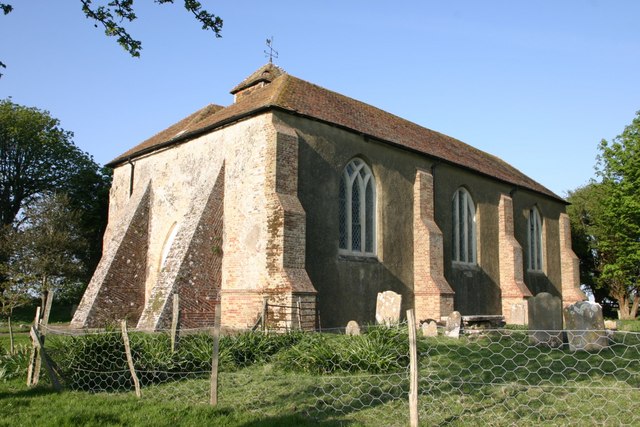
In part this has parallels in the research and other work Sue Hatt is undertaking as part of the team at Tenterden Museum and which the wills group has been contributing to in various ways. Sue provided us with an outline of what she has been doing recently towards the forthcoming exhibition at the Museum. This all sounds very exciting and there was a general feeling that it would be a great idea for the wills group to have an outing in the summer to visit this exhibition which is due to run from Easter to October.
So we have started 2024 as we ended 2023 – very busy as I hope you can see! And next week as well as more meetings, I’ll be able to report on the first of the Kent History Postgraduate group presentations because Maureen Mcleod, having fully recovered, will be discussing the break-up of the deer parks of early modern Tonbridge – it promises to be extremely interesting.
 Centre for Kent History and Heritage
Centre for Kent History and Heritage Sheila Sweetinburgh
Sheila Sweetinburgh 2436
2436